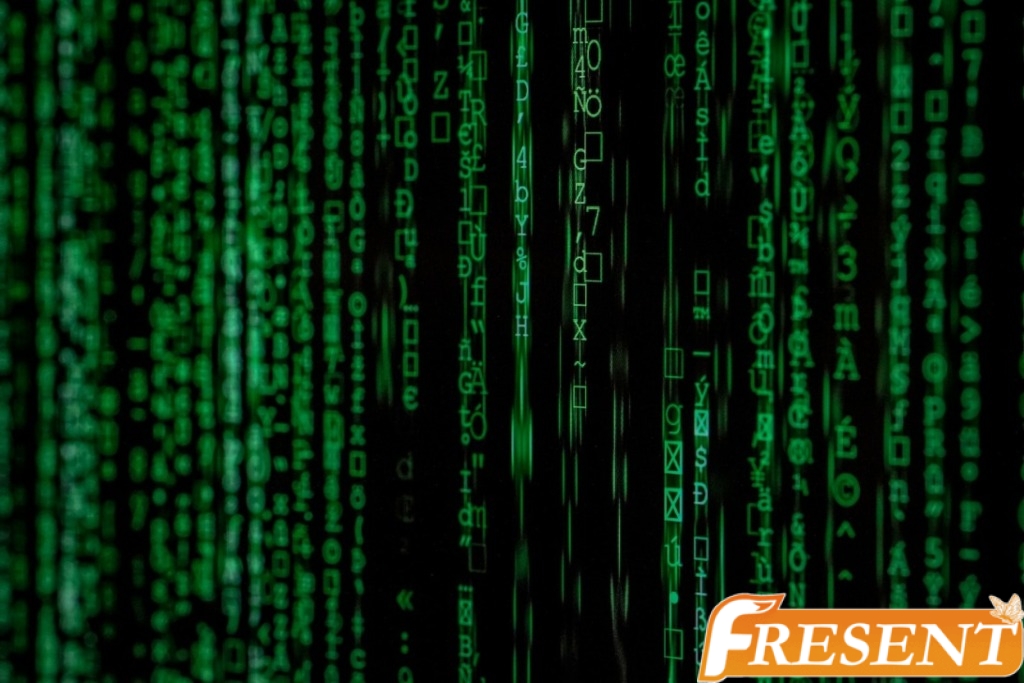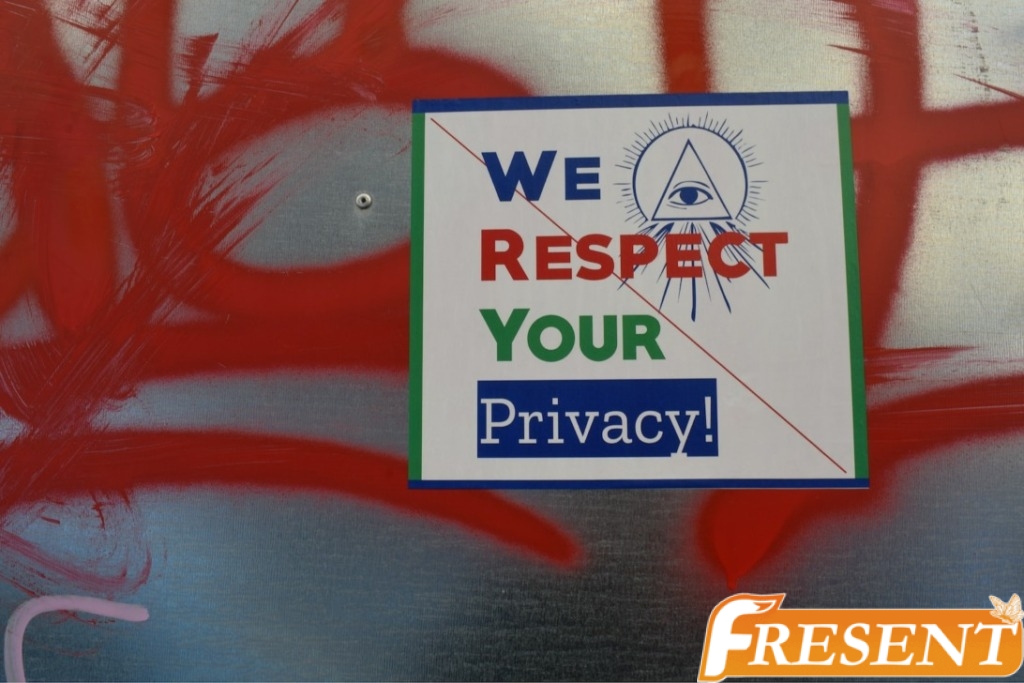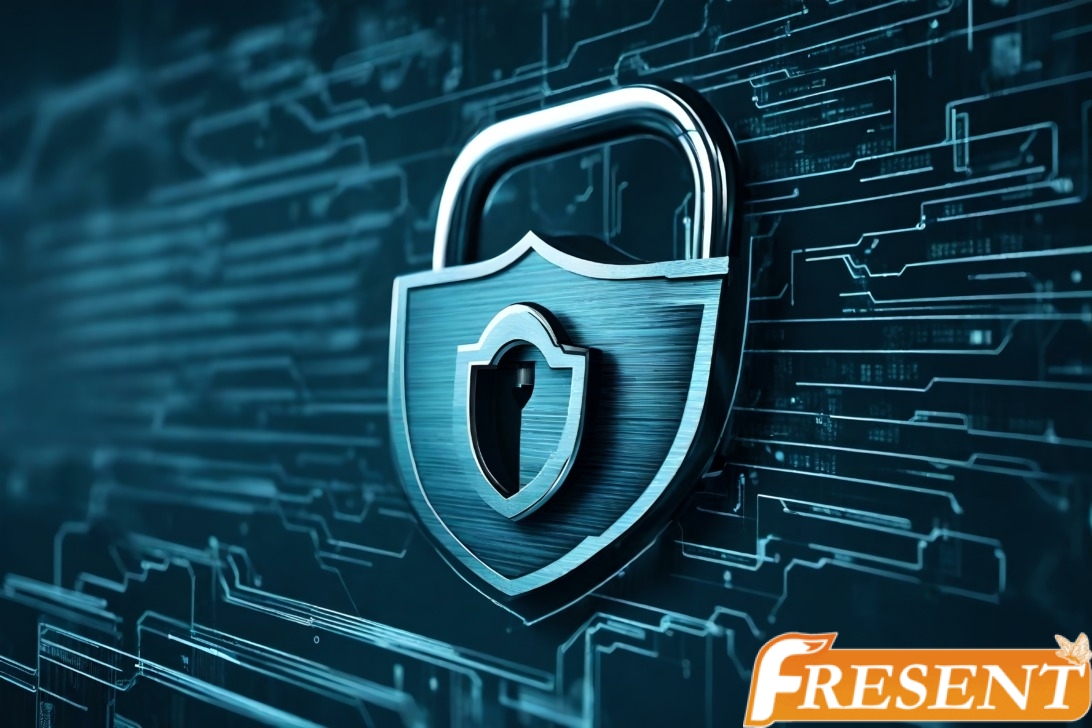Software as a Service (SaaS) has revolutionized how businesses operate, providing convenient and scalable solutions for various business needs. With the rise of SaaS applications, however, concerns about security and data privacy have also emerged. The vulnerability of user data in SaaS systems has become a significant issue that requires attention from both service providers and users.
Encryption is one of the most effective technologies used to protect sensitive information in SaaS applications. Encryption involves converting plaintext into ciphertext using an algorithm or mathematical formula to ensure that only authorized parties can access the data. In this article, we will explore the role of encryption in protecting user privacy in SaaS applications. We will examine different types of encryption used in SaaS systems, standards and regulations related to encryption, best practices for implementation, and future trends that may impact encryption technology’s effectiveness.
Overview of SaaS Solutions and User Privacy Concerns
An examination of SaaS solutions and the associated user privacy concerns reveals a complex landscape that necessitates a critical evaluation of encryption as a means of protecting sensitive information. SaaS user privacy challenges arise from the fact that users are entrusting their data to third-party providers who may not have adequate security measures in place to safeguard it. This can result in breaches, unauthorized access, and misuse of personal information.
Encryption strategies for SaaS privacy protection provide an effective solution to mitigate these risks by ensuring that data is encrypted both at rest and in transit. At rest, encryption ensures that data remains unreadable even if it falls into the wrong hands; while in transit, encryption prevents hackers from intercepting sensitive information as it travels between devices or servers.
In addition to providing security benefits, encryption also helps companies comply with regulations such as GDPR and HIPAA which mandate strict requirements for protecting user data. As businesses increasingly rely on cloud-based systems for their operations, encryption is becoming an essential tool for maintaining customer trust and ensuring legal compliance. The importance of encryption in saas systems cannot be overstated given the significant role they play in modern-day business operations.

The Importance of Encryption in SaaS Systems
The implementation of secure data transmission protocols is pivotal in the safeguarding of sensitive information within cloud-based applications. Encryption plays a critical role in ensuring that user data is protected from unauthorized access, interception, or tampering. The benefits of encryption are numerous and include confidentiality, integrity, and authenticity.
Encryption algorithms use mathematical functions to convert plain text into ciphertext that can only be deciphered with a decryption key. This process ensures that data transmitted over the internet remains private and secure even if intercepted by malicious actors. However, implementing encryption in SaaS systems can pose significant challenges due to factors such as compatibility issues between different platforms and the need for high-performance computing resources.
Encrypting sensitive user information is crucial in protecting privacy and maintaining trust in cloud-based applications. While there may be challenges involved in implementing encryption protocols within SaaS systems, their benefits far outweigh these obstacles. The subsequent section will delve deeper into the types of encryption used in SaaS applications.
Types of Encryption Used in SaaS Applications
Various encryption methods are employed in cloud-based applications to ensure secure data transmission and prevent unauthorized access. Two primary types of encryption used in SaaS applications are symmetric and asymmetric encryption. Symmetric encryption involves using the same key for encrypting and decrypting the data, while asymmetric encryption uses a public key for encrypting the data and a private key for decrypting it.
Symmetric encryption is often faster than asymmetric encryption because it requires fewer computational resources. However, symmetric encryption has a major limitation that both parties must have access to the same secret key, which creates a security risk if the key falls into the wrong hands. Asymmetric encryption solves this problem by providing two different keys: one public and one private. The public key can be shared with anyone without any security risks, while only the owner of the private key can decrypt messages encrypted with their public key.
Encryption Key Management is another important aspect of securing SaaS systems as it involves protecting confidential information such as passwords, credit card details or personal files from unauthorized access or hacking attempts. Key management includes procedures for generating keys, storing them securely, exchanging them between authorized parties, revoking compromised ones and ensuring their integrity throughout their lifecycle. Effective Encryption Key Management is critical to maintaining confidentiality of sensitive information in SaaS applications.
Various types of encryption techniques are used today to protect user privacy in SaaS applications including symmetric vs asymmetric cryptography along with appropriate Encryption Key Management practices to safeguard sensitive information from potential threats.
The subsequent section will explore further about ‘encryption-related standards and regulations’ which play an essential role in establishing trust among users towards these cloud-based services.
Encryption-Related Standards and Regulations
Encryption-related standards and regulations serve as crucial guidelines for ensuring the security and privacy of data in cloud-based applications, providing users with a sense of trust and confidence in these services. These standards are set by organizations such as the National Institute of Standards and Technology (NIST), International Organization for Standardization (ISO), and Payment Card Industry Security Standards Council (PCI SSC). Compliance with these regulations is mandatory for SaaS providers to protect sensitive user information from cyber-attacks.
- NIST: The NIST sets guidelines for both encryption algorithms and key management protocols. They also provide regular updates on emerging encryption trends to help organizations stay up-to-date with evolving security threats.
- ISO: The ISO provides a framework for implementing information security management systems that includes requirements for data confidentiality, integrity, availability, authenticity, and non-repudiation. This standard can be used by SaaS providers to ensure compliance with data protection laws across different countries.
- PCI SSC: The PCI SSC establishes requirements for securing cardholder data in payment systems through its Data Security Standard (DSS). These standards apply not only to payment processors but also to any company that stores or processes credit card information.
- Emerging Encryption Trends: With advancements in technology come new encryption related challenges such as quantum computing which poses a significant threat to traditional cryptographic methods. As a result, emerging encryption trends like post-quantum cryptography are being developed to address this challenge.
Incorporating these established encryption-related standards into SaaS applications is essential in safeguarding user privacy while using cloud-based services. However, simply complying with these regulations is not enough; SaaS providers must also implement best practices when it comes to encryption implementation. By adopting industry-standard algorithms, regularly updating their software stack, conducting routine vulnerability assessments on their infrastructure, among other measures; SaaS providers can instill greater trust among users that their sensitive data will remain secure within the application’s ecosystem.

Best Practices for Encryption Implementation
Implementing best practices for data security is essential for cloud-based applications to ensure the confidentiality, integrity, and availability of sensitive information. Encryption plays a critical role in protecting data by rendering it unreadable without the proper decryption key. However, implementing encryption is not enough on its own as poor encryption key management can result in compromised data security. It is crucial to establish robust key management policies that include secure storage and rotation of keys.
Another aspect to consider when implementing encryption is encryption performance optimization. While encryption provides an added layer of security, it can also impact application performance if not implemented properly. To mitigate any negative impacts on performance, it’s important to use hardware-accelerated cryptography whenever possible and adopt algorithms that offer high levels of security with minimal processing overheads.
Implementing best practices for encryption is crucial for safeguarding user privacy in SaaS applications. This includes establishing sound encryption key management policies and optimizing the implementation of cryptographic algorithms to achieve optimal performance without compromising on security. The next section will explore how compliance regulations affect encryption practices in SaaS applications.
Encryption and Compliance
The implementation of encryption in SaaS systems is not only crucial for protecting user privacy, but also for ensuring compliance with industry standards and regulations. In this regard, auditing and reporting play a significant role in verifying the effectiveness of encryption methods in place. Compliance with industry standards such as HIPAA, GDPR, and PCI-DSS requires strict adherence to encryption protocols that guarantee data confidentiality, integrity, and availability.
Auditing and Reporting
Auditing and reporting practices can provide reassurance to SaaS users about the security of their data. Third-party auditing ensures that a company’s encryption protocols are up-to-date and effective in safeguarding sensitive information. In addition, regulatory reporting requires companies to maintain detailed records of their security measures and any incidents that occur. These reports provide transparency into a company’s security practices and demonstrate their commitment to protecting user privacy.
A recent study found that 74% of IT decision-makers believe that regular security audits are necessary for cloud infrastructure. This indicates the importance of ongoing monitoring and evaluation to ensure the continued effectiveness of encryption protocols. Furthermore, regulatory compliance often involves meeting industry-specific standards for data protection, such as HIPAA or GDPR. Compliance with these standards not only demonstrates a commitment to user privacy but also helps companies avoid costly fines and legal repercussions.
Compliance with Industry Standards
Achieving compliance with industry-specific data protection standards is crucial for SaaS companies to demonstrate their commitment towards securing sensitive information and avoid potential legal consequences. Compliance challenges include keeping up-to-date with evolving regulations, understanding the nuances of different data privacy laws across regions, and ensuring that all data handling processes meet the requirements set forth by governing bodies.
To overcome these challenges, SaaS companies can implement various strategies to achieve compliance. These include conducting regular risk assessments to identify potential vulnerabilities in their systems, implementing robust security measures such as encryption and access controls, and creating a governance framework that ensures ongoing adherence to regulatory requirements. In addition, partnering with third-party auditors or consultants who specialize in data privacy can help ensure that an organization’s policies and practices align with industry standards. By taking proactive measures to achieve compliance with relevant regulations, SaaS companies can establish themselves as trustworthy custodians of user data while avoiding costly legal penalties.
Encryption plays a vital role in protecting user privacy by securing sensitive information from unauthorized access. Therefore, the next section will focus on how encryption technologies contribute to overall data security in SaaS applications.
Encryption and Data Security
How effective is encryption in safeguarding sensitive data and ensuring the confidentiality of information exchanged between SaaS users? In essence, data encryption techniques are critical in protecting user privacy as they work by encoding plain text into a ciphertext that can only be decrypted using a specific key. Encryption ensures that unauthorized parties cannot access user data, thus providing an additional layer of security to the overall system. Moreover, encryption also plays a vital role in meeting compliance requirements for various industry standards, such as HIPAA and PCI DSS.
Encryption and user data protection go hand-in-hand. While several types of encryption algorithms exist, each with its unique strengths and weaknesses, it is essential to choose one that provides robust protection without compromising system performance. Furthermore, implementing appropriate security measures such as multi-factor authentication protocols can further enhance data protection efforts. Therefore, it is crucial to evaluate the effectiveness of encryption methods continually and update them regularly to keep up with emerging threats.
Data encryption techniques play a vital role in protecting user privacy in SaaS systems. Encryption ensures that sensitive information remains confidential by encoding plain text into ciphertext that can only be decrypted using a specific key. However, while strong encryption methods provide robust protection against cyber threats, regular evaluation and updates are necessary to ensure continued effectiveness against evolving threats. The next section will explore how encryption technology supports user authentication mechanisms within SaaS systems without compromising security or usability.
Encryption and User Authentication
This discussion focuses on the role of encryption in user authentication, specifically through two-factor authentication and biometric authentication. Two-factor authentication involves a second form of verification beyond a password, such as a code sent to a mobile device. Biometric authentication uses unique physical characteristics, such as fingerprints or facial recognition, to verify identity. Both methods enhance security by adding an extra layer of protection against unauthorized access to sensitive data.
Two-Factor Authentication
Furthermore, the implementation of Two-Factor Authentication in SaaS applications has become increasingly important in enhancing user privacy and security measures. Two-Factor Authentication (2FA) is a security process that requires users to provide two forms of identification before accessing their accounts. This involves the use of a password or PIN, and a second layer of authentication such as a fingerprint scan, facial recognition or an OTP (one-time-password). The integration of 2FA with SaaS applications provides additional layers of security for users beyond just passwords. It is an effective way to prevent unauthorized access and protect sensitive data from hackers.
The benefits of 2FA are numerous. Firstly, it helps to reduce the risk of identity theft since it verifies the identity of the user through multiple sources. Secondly, it prevents unauthorized access by requiring additional validation methods beyond the standard username and password combination. This makes it much more difficult for hackers to breach user accounts on SaaS platforms. Lastly, 2FA can be customized to meet specific needs and requirements such as using biometric data like fingerprints or facial recognition technology instead of traditional passwords which can be easily guessed or hacked. With these benefits in mind, organizations should consider integrating 2FA into their SaaS applications to enhance privacy and security measures even further.
Moreover, Biometric authentication offers another level of protection that is even harder for attackers to bypass than other forms of two-factor authentication like OTPs or physical tokens.
Biometric Authentication
Previously, we discussed the importance of Two-Factor Authentication (2FA) in safeguarding user privacy. While 2FA has proven to be a reliable security measure, its implementation remains vulnerable to hacking and phishing attacks. As a result, more sophisticated methods have been developed to bolster user privacy protection. One such method is Biometric authentication.
Biometric authentication utilizes unique physical characteristics such as fingerprints, facial recognition, retina scans, and voice recognition as an alternative to traditional password authentication. The implementation of biometric authentication has several advantages over traditional passwords since biometrics are not easily replicated or stolen compared to passwords that can be forgotten or hacked. Additionally, biometric authentication provides a higher level of convenience for users who no longer need to remember complex passwords or undergo frequent password changes regularly. However, like any technology solution, there are limitations in its implementation that must be considered carefully before adoption. These limitations include compatibility issues with various devices and platforms, accuracy concerns with certain types of biometrics (such as facial recognition), and potential data breaches resulting from storing sensitive information on servers.
As encryption plays an integral role in cloud security solutions used by SaaS providers; it is essential to examine how this technology can complement the use of biometrics authentication in protecting user privacy further.

Encryption and Cloud Security
Cloud computing has become an essential component in modern-day business operations, but it has also brought about significant security risks. One of the primary concerns for cloud users is the security of their data and information stored on remote servers. Encryption is a fundamental tool used to secure cloud environments, protect sensitive data from unauthorized access, and mitigate against potential cyber threats.
Cloud Security Risks
One crucial aspect of securing SaaS user privacy is understanding the various risks associated with cloud security. Cloud computing presents a unique set of challenges when it comes to data encryption and privacy protection. One concern is the potential for data breaches or unauthorized access to sensitive information stored in the cloud. Many organizations rely on third-party providers to secure their data, which can introduce additional vulnerabilities if not properly managed.
Another risk is the lack of control over physical infrastructure and network security measures, which may leave systems vulnerable to attacks such as denial-of-service (DoS) or distributed-denial-of-service (DDoS). Additionally, there may be compliance issues related to regulatory requirements around data storage and transmission that must be addressed in order to ensure proper protection of sensitive information. These risks highlight the importance of utilizing strong encryption protocols and implementing effective security measures both within an organization’s own infrastructure as well as with their chosen SaaS providers. This leads us into further discussion about how encryption plays a critical role in protecting against these risks within the context of cloud security.
Encryption and Cloud Security
Understanding the potential security threats in cloud computing is essential for safeguarding sensitive information stored in third-party providers. Encryption plays a vital role in protecting user privacy and preventing data breaches. Here are some ways encryption helps to ensure cloud security:
- Encryption transforms plain text data into ciphertext that can only be read by authorized parties with access to decryption keys.
- Encrypted data is protected from unauthorized access, even if it is intercepted or stolen during transmission.
- Encrypted data ensures compliance with industry-specific regulations governing the storage and handling of sensitive information.
Encryption not only helps to prevent data breaches but also provides an added layer of protection for user data. Sensitive information such as personal identification numbers, health records, financial reports, and other proprietary documents are kept secure and private through encryption techniques. The next section will delve deeper into the relationship between encryption and cybersecurity.
Encryption and Cybersecurity
Cyber threats to SaaS systems have increased significantly over the years, with hackers constantly devising new ways to exploit vulnerabilities in these systems. Encryption has emerged as a key defense mechanism against cyber attacks, providing a secure means of protecting sensitive data. By rendering information unreadable to unauthorized parties, encryption helps prevent data breaches and ensures that confidential information remains protected.
Cyber Threats to SaaS Systems
Threats to SaaS systems are ever-present and can arise from both internal and external sources, as the adage goes: ‘eternal vigilance is the price of liberty.’ The use of cloud-based software has increased exponentially over recent years, making it a prime target for hackers. As such, cybersecurity measures must be implemented by SaaS providers to protect against data privacy threats.
Internal threats may come from employees or contractors with access to sensitive data who misuse it intentionally or unintentionally. External threats may involve hacking attempts aimed at stealing user information, financial details, or other confidential data. To mitigate these risks, SaaS providers must adopt strict security protocols and continuously monitor their systems for any unusual activity that could indicate a breach.
Encryption serves as a defense mechanism in protecting against these cyber threats by rendering any intercepted data unreadable without the decryption key. In the next section, we will explore how encryption plays a crucial role in safeguarding user privacy within SaaS systems.
Encryption as a Defense Mechanism
In the realm of cloud-based software security, implementing strong encryption measures serves as a crucial safeguard against unauthorized access to sensitive information. Encryption has become an essential tool for protecting personal privacy and business confidentiality in Software as a Service (SaaS) systems. Encrypted data can only be accessed by authorized parties with the appropriate decryption keys, adding an extra layer of protection to sensitive data.
Encryption for personal privacy ensures that users’ private information is kept confidential and secure from external threats such as hacking and identity theft. SaaS providers employ various encryption methods, such as Advanced Encryption Standard (AES) and Transport Layer Security (TLS), to prevent data breaches. On the other hand, encryption for business confidentiality protects companies’ trade secrets and intellectual property from being stolen or leaked to competitors or cybercriminals. In conclusion, employing robust encryption mechanisms enhances the trustworthiness of SaaS platforms by providing a secure environment for storing users’ sensitive data while safeguarding companies’ confidential information from external threats.
Encryption is closely linked to business continuity in SaaS systems because any disruption in encrypted data transmission or storage could lead to significant losses in terms of revenue and reputation damage. Therefore, it is critical for businesses to implement effective contingency plans and risk management strategies that account for possible disruptions caused by encryption failures or other security breaches.
Encryption and Business Continuity
The implementation of encryption measures can serve as a reliable contingency plan to ensure uninterrupted business operations during unforeseen circumstances. The use of remote work has become increasingly popular, especially in the wake of recent global events that have forced many businesses to shift towards a remote working model. Such arrangements pose significant risks to data security, particularly when sensitive information is exchanged via unsecured networks. Encryption technology offers a viable solution by securing data transmissions and protecting users’ privacy from cyber threats.
Encryption also plays an essential role in disaster recovery planning for SaaS providers. Natural disasters or system failures can result in significant data loss, which can be detrimental to any organization’s operations. As such, it is vital for SaaS providers to invest in robust disaster recovery plans that include regular backups and restoration procedures. Encryption ensures that critical user data is protected even if backup systems are compromised by hackers or other malicious actors.
Encryption technology provides a reliable mechanism for ensuring uninterrupted business continuity and safeguarding against potential cybersecurity threats and natural disasters. By implementing robust encryption measures, SaaS providers can continue providing services securely while maintaining their customers’ confidence in their ability to protect their privacy and sensitive information. In the next section about ‘encryption and collaboration,’ we will explore how encryption technology facilitates secure communication channels between different users on the same platform.
Encryption and Collaboration
Encryption has been demonstrated to provide a reliable solution for business continuity. It ensures that sensitive data remains secure, even in the event of system failures or cyber-attacks. However, encryption is not only essential for ensuring business continuity but also plays a vital role in facilitating secure collaboration.
Collaborative encryption involves the use of cryptographic techniques to protect shared information during collaborations between different parties. This type of encryption allows multiple parties to work on sensitive projects without compromising the security and confidentiality of their data. Secure collaboration is becoming increasingly important for businesses as more people are working remotely.
Collaborative encryption is an effective measure that can help organizations ensure secure collaboration among employees and other stakeholders. With this technique, businesses can safeguard their confidential data from unauthorized access while allowing multiple parties to work together on sensitive projects seamlessly. The next section will explore how encryption can be used to enforce privacy policies effectively in SaaS applications.

Encryption and Privacy Policies
Effective enforcement of privacy policies in collaborative applications is vital for ensuring the security and confidentiality of sensitive information shared between different parties. Encryption plays a crucial role in protecting user privacy by safeguarding data from unauthorized access. It is an effective technique that ensures that the transmitted data remains confidential, secure, and tamper-proof.
Encryption and data privacy are closely linked because encryption algorithms convert plain text into ciphertext, making it impossible for unauthorized users to read or access it. For example, when using cloud-based software-as-a-service (SaaS) applications, encryption provides an extra layer of protection by encrypting sensitive user data before transmitting it over the internet. This technique ensures that even if hackers intercept the transmission or gain access to the cloud server, they cannot decipher encrypted data without proper decryption keys.
Encryption enhances user confidentiality by limiting access to authorized personnel only. It achieves this objective through techniques such as symmetric key encryption or public key cryptography, which require authentication before granting access to encrypted data. Encryption also helps SaaS providers comply with regulatory requirements such as HIPAA or GDPR that mandate strong security measures for sensitive personal information. As more businesses adopt SaaS solutions for their operations, encryption will continue to play a critical role in safeguarding user privacy and enhancing cybersecurity measures.
As we look towards future trends in encryption technology, new developments may emerge to enhance its effectiveness further. One possibility could be quantum cryptography that uses quantum mechanics principles to create unbreakable encryption codes. Another trend is homomorphic encryption that allows computations on encrypted data without decrypting it first – thus ensuring maximum confidentiality while still enabling processing power utilization. These advancements have significant implications for maintaining secure digital infrastructure across multiple industries and sectors globally – demonstrating how important continued investment in cryptographic research will be going forward.
Encryption and Future Trends
Encryption technology has come a long way since its inception, and continues to evolve at a rapid pace. Advancements in encryption technology have led to more secure data protection measures, but also present new challenges for security professionals. As organizations continue to rely on cloud-based services and remote work becomes increasingly common, the future of encryption will undoubtedly play a crucial role in protecting sensitive information from cyber threats.
Advancements in Encryption Technology
The evolution of cryptographic algorithms has greatly improved the security of online communication, enabling software as a service (SaaS) providers to offer more effective protection against malicious attacks and unauthorized access. Encryption advancements have been at the forefront of this improvement, with encryption innovation playing a critical role in safeguarding user privacy in the cloud. Some recent advancements in encryption technology include:
- Homomorphic encryption: This allows computation on encrypted data without decryption and is useful for applications that require secure processing of sensitive information.
- Multi-party computation: This enables multiple parties to jointly compute a function on their private inputs without revealing them.
- Quantum-resistant cryptography: As quantum computing becomes more prevalent, this type of cryptography ensures that data remains secure even against powerful quantum computers.
- Post-quantum cryptography: This is another method to address the threat posed by quantum computers by using mathematical problems that are believed to be hard even for such machines to solve.
- Fully homomorphic encryption: With this type of encryption, it’s possible to perform arbitrary computations on ciphertexts without knowing or decrypting them.
These innovations provide significant benefits in terms of privacy and security for SaaS users. However, despite these developments, there are still future challenges and opportunities that need to be addressed.
Future Challenges and Opportunities
As the digital landscape continues to evolve, the field of cryptography faces a rising tide of challenges and opportunities, much like a ship navigating through stormy waters. Emerging technologies such as quantum computing present new threats to traditional encryption methods that may require novel cryptographic approaches. Quantum-resistant algorithms are already being developed and tested for post-quantum security, but their practicality and efficiency are still uncertain.
Another challenge is regulatory compliance. Governments worldwide are implementing laws and regulations that require service providers to comply with certain standards in data protection and privacy. Compliance can be costly and time-consuming, especially for small businesses that lack resources. However, complying with these regulations is essential in building trust with customers who expect their data to be protected. Service providers must balance compliance requirements with the need for user-friendly services that do not impede users’ access or experience while maintaining high levels of security against cyber threats.
Conclusion
SaaS solutions have become increasingly popular in recent years, but user privacy concerns remain a critical issue. Encryption is an essential tool for protecting sensitive data and ensuring that users’ information remains secure. Different types of encryption are used in SaaS applications, including symmetric and asymmetric encryption, along with hashing algorithms.
Numerous standards and regulations govern the implementation of encryption practices in SaaS systems. Organizations must comply with these regulations to avoid penalties and maintain their reputation among customers. Implementing best practices for encryption can help organizations ensure the security of their data while also maintaining business continuity.
Collaboration between different parties is essential in today’s interconnected world, and encryption plays a vital role in facilitating collaboration without compromising security. Privacy policies should clearly outline how users’ data is encrypted, stored, and handled to build trust among users. As technology continues to evolve, newer trends such as homomorphic encryption may become more prevalent in SaaS solutions.
In conclusion, the role of encryption cannot be overstated when it comes to protecting user privacy in SaaS applications. With the increasing amount of sensitive data being exchanged online every day, it has become imperative for organizations to implement robust encryption practices throughout their entire infrastructure. By doing so, they can not only safeguard their users’ information but also establish themselves as trustworthy entities that prioritize privacy protection above all else.

